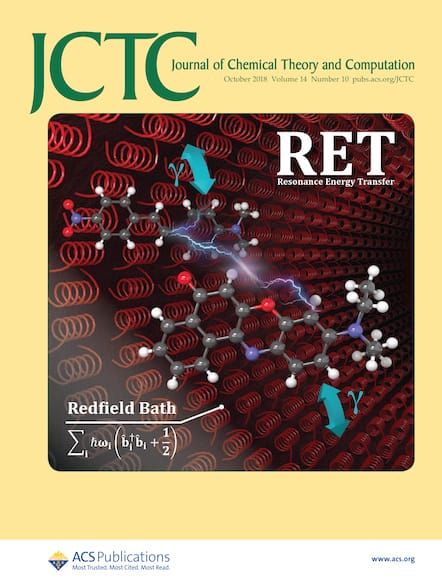预测分子模拟的迁移学习:CCSD(T)精度的数据高效势能面。
IF 5.7
1区 化学
Q2 CHEMISTRY, PHYSICAL
引用次数: 0
摘要
准确的势能面(PESs)是预测分子模拟的关键。然而,随着分子大小的增加,获得最高水平量子化学精度的PES,如CCSD(T),在计算上变得不可行。这项工作提出了CCSD(T)质量的PESs,使用基于迁移学习的数据高效技术,以一小部分计算成本获得最先进的精度,否则将是难以处理的系统。最重要的是,本文所追求的精确分子模拟框架超越了特定的可观测值,并遵循合理的策略来获得最高精度的PESs,可用于光谱学和其他实验。作为PESs的严格测试,确定了tropolone和(丙酸)-(甲酸)二聚体(PFD)的半经典隧道分裂以及tropolone的非谐波频率。对于tropolone,所有观测值都与使用高水平PES的实验非常吻合,而对于PFD,一致性不太好,但仍然比以前的计算好几个数量级。本文章由计算机程序翻译,如有差异,请以英文原文为准。
Transfer Learning for Predictive Molecular Simulations: Data-Efficient Potential Energy Surfaces at CCSD(T) Accuracy.
Accurate potential energy surfaces (PESs) are critical for predictive molecular simulations. However, obtaining a PES at the highest levels of quantum chemical accuracy, such as CCSD(T), becomes computationally infeasible as molecular size increases. This work presents CCSD(T)-quality PESs using data-efficient techniques based on transfer learning to obtain state-of-the-art accuracy at a fraction of the computational cost for systems that would otherwise be intractable. Most importantly, the framework for accurate molecular simulations pursued here extends beyond specific observables and follows a rational strategy to obtain highest-accuracy PESs, which can be used for applications to spectroscopy and other experiments. As rigorous tests of the PESs, semiclassical tunnelling splittings for tropolone and the (propiolic acid)-(formic acid) dimer (PFD) as well as anharmonic frequencies for tropolone were determined. For tropolone, all observables are in excellent agreement with the experiment using the high-level PES, whereas for PFD, the agreement is less good but still orders of magnitude better than previous calculations.
求助全文
通过发布文献求助,成功后即可免费获取论文全文。
去求助
来源期刊

Journal of Chemical Theory and Computation
化学-物理:原子、分子和化学物理
CiteScore
9.90
自引率
16.40%
发文量
568
审稿时长
1 months
期刊介绍:
The Journal of Chemical Theory and Computation invites new and original contributions with the understanding that, if accepted, they will not be published elsewhere. Papers reporting new theories, methodology, and/or important applications in quantum electronic structure, molecular dynamics, and statistical mechanics are appropriate for submission to this Journal. Specific topics include advances in or applications of ab initio quantum mechanics, density functional theory, design and properties of new materials, surface science, Monte Carlo simulations, solvation models, QM/MM calculations, biomolecular structure prediction, and molecular dynamics in the broadest sense including gas-phase dynamics, ab initio dynamics, biomolecular dynamics, and protein folding. The Journal does not consider papers that are straightforward applications of known methods including DFT and molecular dynamics. The Journal favors submissions that include advances in theory or methodology with applications to compelling problems.
 求助内容:
求助内容: 应助结果提醒方式:
应助结果提醒方式:


